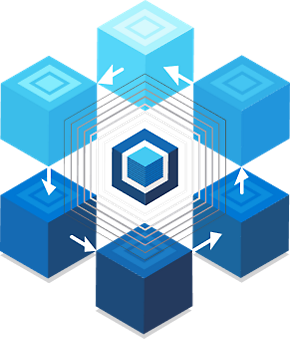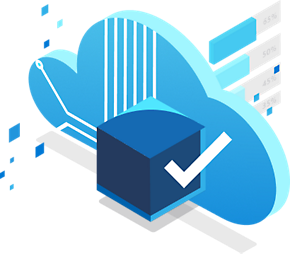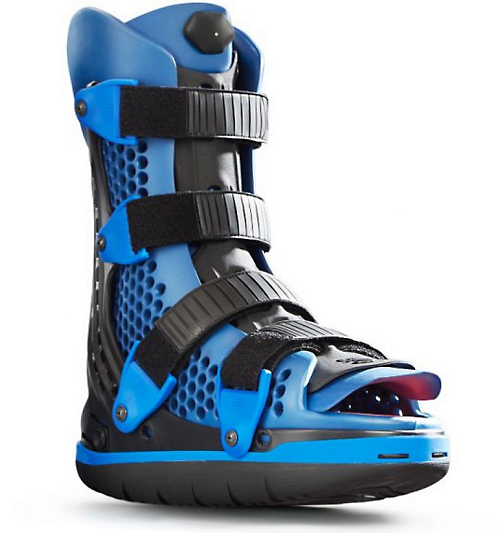Azure IoT for healthcare
Deliver personalized care, empower care teams and employees, and improve operational outcomes.
Enabling the next generation of healthcare IoT solutions
Azure IoT offers a trusted technology platform to improve patient outcomes, streamline clinical operations, and optimize your healthcare manufacturing and supply chain with seamless, smart, and highly secure IoT technology.
Seamless
Reduce the time to market for your IoT healthcare solutions with health-specific app templates, a growing selection of certified devices, and the industry’s most comprehensive portfolio of IoT services. Quickly connect existing data sources, health record systems, and research databases as well as exchange data in the HL7 FHIR standard data format.
Smart
Bring together the intelligent edge with the intelligent cloud with Azure IoT—to deliver healthcare data in an interoperable format, enabling insights backed by advanced analytics, AI, and new models of interactivity with mixed reality.
Secure
From the edge to the cloud, monitor and manage your solution’s end-to-end security with Azure Sphere and Azure Security Center for IoT. With HIPAA compliance and HITRUST certifications, Azure IoT for healthcare helps you make sure that your patient data is secure and privacy is protected.
Research: IoT Signals for Healthcare
Microsoft has committed to investing USD 5 billion in IoT research and the intelligent edge—adding new services and features to Azure IoT for industries like healthcare, but also driving business strategy and executive leadership discussions to define success in the age of intelligence.
From optimizing patient, staff, and inventory flow to providing remote patient care to optimizing manufacturing and securing supply chains, IoT is helping healthcare providers create new ways to interact with patients, deliver more consistent high quality care, and introduce new efficiencies along their supply chain.

Applications of IoT in healthcare
Explore common scenarios for the Internet of Medical Things (IoMT) and IoT solutions for healthcare with Azure.
Continuous patient monitoring
Extend patient care beyond the hospital walls, reduce re-admissions, and manage disease through in-patient or remote patient monitoring.
In-home care
Assist our aging population, monitor recovery and rehabilitation, and help to manage disabilities and chronic diseases.
Smart hospital equipment
Gain insights from your hospital equipment to improve patient outcomes and manage equipment health.
Smart hospital building
Enable a better hospital experience for care teams, patients, and their support networks.
Inventory management for medical supplies
Ensure that medical supplies are fully stocked and readily available to provide efficient and effective care.
Cold chain supply tracking
Build a transparent, secure, and climate-controlled supply chain for your pharmaceuticals to reduce tampering, prevent spoilage, and ensure efficacy.
Healthcare manufacturing
Ensure that medical devices and products maintain the highest levels of quality and comply with industry standards through the entire supply chain, from production to patient.
Find the right IoT approach for your healthcare solution
Choose your foundation
Accelerate your build with a managed app platform
Get started building apps with Azure IoT Central—a managed app platform allows you to build apps quickly by reducing the number of decisions you need to make to achieve results. Most of the elements of your solution are already coded and managed, so you can focus on adding industry knowledge and rapidly scaling and connecting devices.
Build from the ground up with platform services
Get the robust building blocks for highly customized and flexible IoT applications with Azure platform services. Explore your options to create and code your own IoT solution—and add and connect devices, ingest, store, and analyze your data with Azure IoT Hub and Azure Digital Twins.
We have you covered with learning resources:


Build with a partner
Whether building with Azure IoT services or an IoT platform like Azure IoT Central, we recommend working with one of our certified partners to ensure the best experience, from proof of concept through full-scale deployment.

Manage health data in the cloud and drive better outcomes
Create and deploy a Fast Healthcare Interoperability Resource (FHIR®) service built with interoperability and regulatory compliance in mind—and ingest medical data from devices—with Azure API for FHIR and Azure IoT Connector for FHIR.
See an IoT healthcare solution in action by Sensoria
Improving compliance and treatment outcomes for patients with diabetic foot ulcers (DFU) through personalized care and continuous monitoring.

Solution overview
Diabetic foot ulcers (DFUs) are a leading cause of hospitalizations in the US for diabetics. The primary course of treatment for DFUs is an offloading device or non-removable cast, but compliance often remains a significant challenge, leading to a high treatment failure rate among patients with DFUs. Healing time can be accelerated with therapeutic footwear optimized via plantar pressure analysis to take weight and pressure off the area of ulceration.
To help providers personalize care and improve compliance, Sensoria partnered with leading DFU boot manufacturer, Optima Molliter, to create the Motus Smart Solution. These connected devices enable clinicians to remotely monitor patients when they leave the clinic to better track patient compliance and improve care plans.


Global View
Step 1
Get a global view of an entire clinician’s panel and see all of the patients diagnosed with DFUs that use the Motus Smart boot in their treatment plan.
Step 2
Order the view by adherence level to prioritize patients with low adherence and the highest need for escalation of care.


Import data
Step 1
Import information and exchange data in the HL7 FHIR standard format by easily connecting existing data sources, such as electronic health record systems and research databases.
Step 2
Use the timer in the bottom left corner to create an alert for the amount of time spent with patients. Use the alert for CPT code 99457 documentation, administration, and reimbursement.


Provision
Step 1
Customize and provision the Motus device in clinic to send telemetry data to the Sensoria application. The clinician may also provision the patient’s mobile phone app, using the individual QR codes. The patient app securely provides access to their individual data while clinicians have a global view of data for all their patients.
Step 2
If patient is adherent to the offloading and activity protocols as prescribed in treatment, the app provides positive behavioral reinforcement. Each event is recorded, enabling data-driven interaction.


Alerts
If the patient is unable to adhere to the recommended offloading protocol, the system will prompt the mobile app to provide alerts with actional, direct, behavioral feedback to improve compliance.

Compliance
View compliance metrics and get quantified information on the patient’s compliance on a daily or on an hourly basis to better tailor the treatment plan and enlist patient participation in care.
See an hourly analysis of time logged wearing the device and level of activity. Identify periods where no patient data is emitted, in order to drive follow-up and personalize care.

Note: FHIR® is the registered trademark of HL7 and is used with the permission of HL7.




